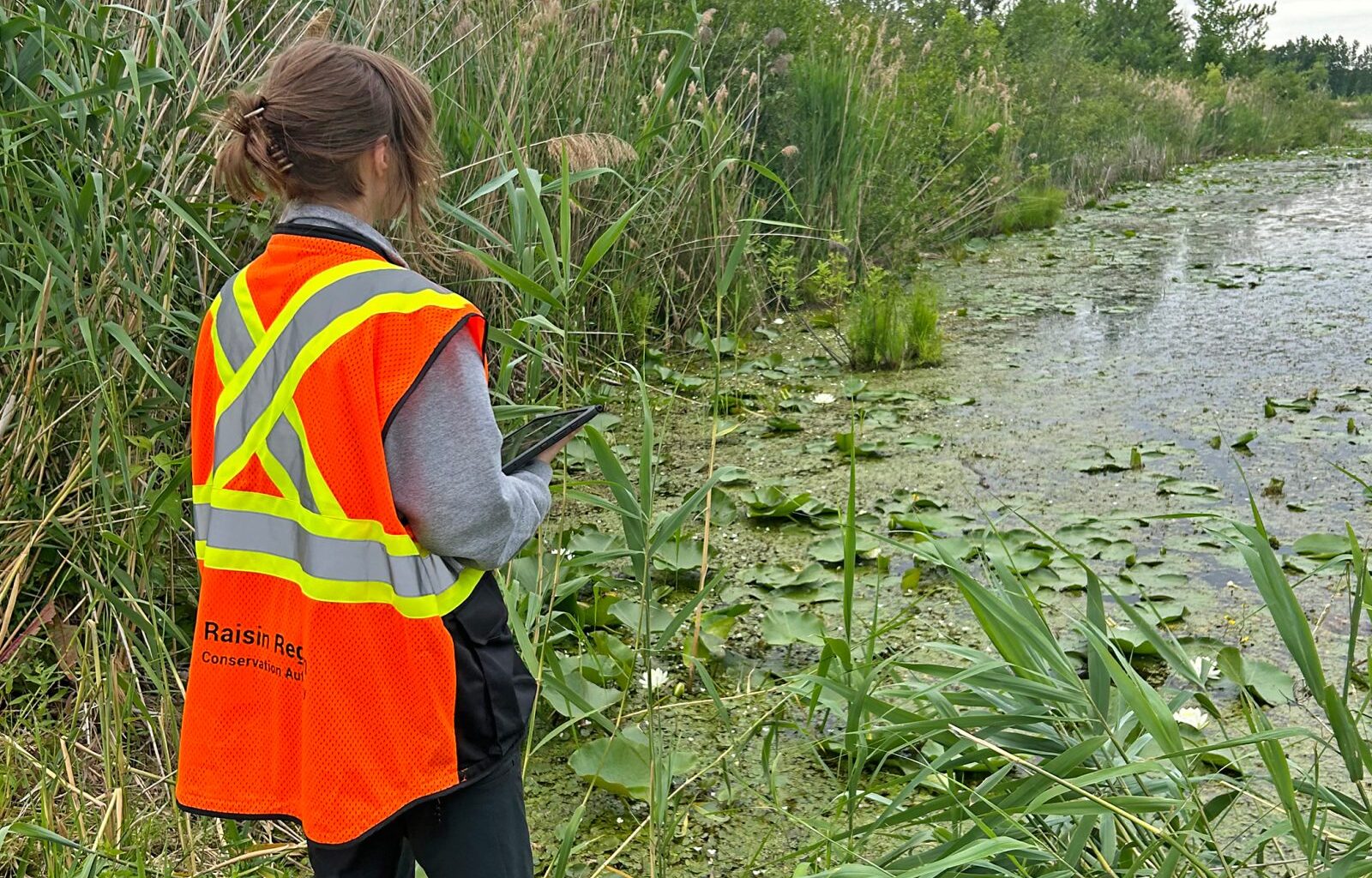KIM BURTON-SCHRAM
LOCAL JOURNALISM INITIATIVE REPORTER
The Raisin River Conservation Authority (RRCA) is providing learning opportunities for both visitors and summer students to discover more about the natural environment in SDG Counties.
Visitors to the three conservation sites, Cooper Marsh, Charlottenburgh Park and Gray’s Creek can participate in the RRCA’s research and monitoring of plants, insects and animals living in the environment. With the assistance of the iNaturalist phone app, users can take a photo of the flora, fauna & frogs, identify them through the app and have the discoveries logged into an online database. These identified plants and animals will provide the RRCA with valuable information and help monitor the biodiversity at the conservation areas, and let’s visitors explore the world of a nature & science, perhaps embarking young explorers on their career path. “The Seek and iNaturalist app are very useful tools,” says Scott Braithwaite, RRCA’s Project Coordinator. “They can act as your very own wildlife guidebook and help you identify any plant or animal you come across that piques your curiosity.”
Through the Canada Summer Jobs program, the RRCA has 18 summer students in 2025 to help assist with programs and services at the conservation sites. Students can gain skills in science, communication and environmental maintenance & protection. Annabelle Beaudry, studying Environmental Science and Biology at Bishop’s University, is working at Cooper Marsh as a Nature Interpreter. “Working for the RRCA has allowed me to deepen my understanding of the environment and learn more about the rich biodiversity of Cooper Marsh,” said Annabelle. “I’ve also gained experience in conservation practices and effectively communicating with visitors.”
The RRCA maintains over 2,000 acres of environmentally significant land to conserve and protect sensitive habitats, maintain green infrastructure to mitigate flooding and increase the tree canopy, while providing eco-tourism & recreation opportunities. “So far, over 4,500 observations have been made across our three conservation areas,” said Scott Braithwaite, “which have contributed to the RRCA’s conservation efforts.” The ongoing bio-survey results will be posted on the RRCA website at www.rrca.on.ca/citizenscience.
